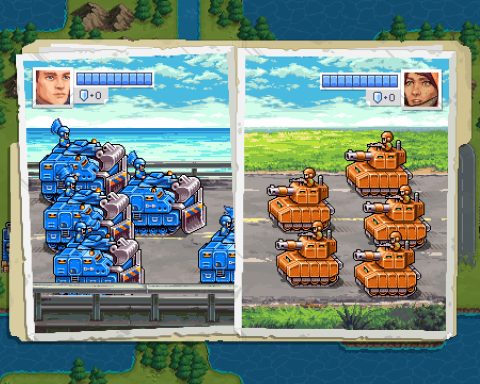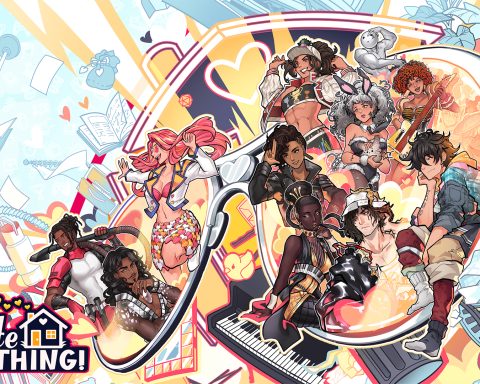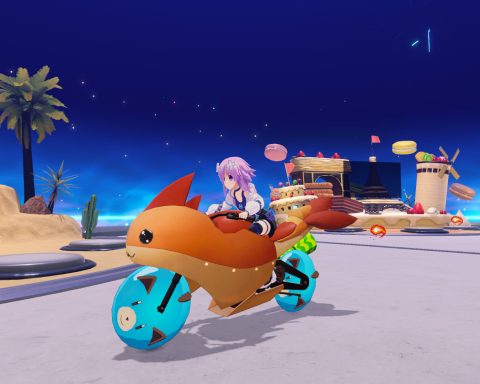Sometimes, games don’t need to be remade. When the creative vision was already fully realised the first time around, simply making the thing available again is all that’s needed. That’s what Nintendo has done with Paper Mario: The Thousand-Year Door, and it’s as good now as it was ever.
Thought by many to be the finest in the Paper Mario sub-series featuring the red-hatted plumber, The Thousand-Year Door took the concepts that Intelligent Systems pioneered in the original Paper Mario (for the Nintendo 64) and fully developed them to perfection for this outing. What was great about these two games is that they were, effectively, traditional JRPGs, with the familiar structure, turn-based combat, and plenty of variety without the “innovation” that the series would progressively acquire with the increasingly experimental sequels like Sticker Star, Color Splash and The Origami King. Those titles are enjoyable in their own way, but there’s something comfortably familiar to sitting down to Paper Mario and its sequel. This sequel is basically just more of what made the original Paper Mario great, but more in a good way.
Nintendo has barely done a touch-up job to put this game on Nintendo Switch. It’s now in wide screen, of course, (remember playing games in 4:3 on the GameCube? Those were the days). There’s also been some revamping of the graphics to take advantage of the improved resolution and depth of colour that modern screens can display. The effect is gorgeous and if you didn’t know that it was a “remake” of a 20 year old game you would assume that it was a new entry in the series.
There are also some quality of life improvements around quick-travel pipes and the ability to swap characters around instantly. These address the very minor irritations that might come from playing the GameCube original in 2024, but also barely count as a set of “improvements.” For all intents and purposes, if you but Paper Mario: The Thousand-Year Door, you’re buying the exact same game you played back then.
That is awesome because The Thousand-Year Door is right up there with Nintendo at its whimsical finest. It starts with the design of the world itself. Because everything is designed to look and behave like paper in 3D spaces, there are many quirky gameplay applications that get opened up, from having Mario folded into all kinds of designs, to being able to find secrets by (literally) falling through cracks. In combat, the environment gets converted into a stage, and not only is this a fun visual effect, but it’s possible to manipulate the environment to your advantage (such as knocking down scenery to do additional damage).
The downside is that the crowd will occasionally try and throw things at you, so you’ll need to keep a close eye on the foreground so you can respond to those incoming projectiles too.
As you explore your party will grow, from the relatively meek Goomba ally that joins you first, through to a Bob-omb, a mousey thing, Yoshi and more. Each of these characters adds a special ability for Mario to use outside of battle along with their unique utility in combat. Meanwhile, Mario acquires all kinds of those papercraft skills, like being able to turn into a paper aeroplane, a boat, and more, and that opens up even more opportunities. By the time you get to the middle of the game, you’re running a gauntlet of total variety at all times, delivered at a high energy, constantly. This is about a 30-hour game, mind you. It’s ability to maintain that energy is genuinely impressive.
All of this colour and style is backed up with a hugely entertaining script and cast of characters. The comedy, puns, and downright surreal situations will never fail to bring a smile as you play, and the humour is integrated cleverly into the gameplay, too. A good example of this comes early on – Mario passes through a couple of “towers,” each featuring a battle with some tough enemies. Then he gets to the third tower, and what very much looks like a boss battle. After flicking a switch, however, he finds himself the star contestant of a “game show,” and the boss is actually the host. If he gets five basic trivia questions correct, then that’s it, mission cleared. No battle. One of the most effective things that The Thousand-Year Door does is play with your expectations of the JRPG genre for both humour and style, without overpowering them and undermining the game’s quality as being traditional to the genre.
The other thing that’s so impressive about Paper Mario and its sequel is that both games are so effective at making the focus the part of JRPGs that people tend to gloss over – especially back when these games were new. Back in those days, the JRPG was about the story – a team of heroes embarking on an epic quest with earth-shattering consequences. However the gameplay generally featured turn-based battles that could become very repetitive. The term “grinding”, where you run around fighting endless battles for no other reason that to level up, was a notorious quality of the genre back then. Things are different now, with developers working hard to create combat systems that are engaging from start to finish (and more often than not ditching turn-based combat for action). However, back then Paper Mario was more of an oddity, with its very funny but largely irrelevant narrative and the focus on gameplay systems and an endlessly enjoyable combat system.
That is probably a big part of the reason that Thousand-Year Door doesn’t feel like a “retro” game to play, despite being 20 years old and this “remake” being barely touched from the original. It’s rare for a game to be quite this timeless, and thank goodness it hasn’t been lost to the GameCube platform and now people can discover or rediscover it on modern hardware.
By purchasing from this link, you support DDNet.
Each sale earns us a small commission.
















